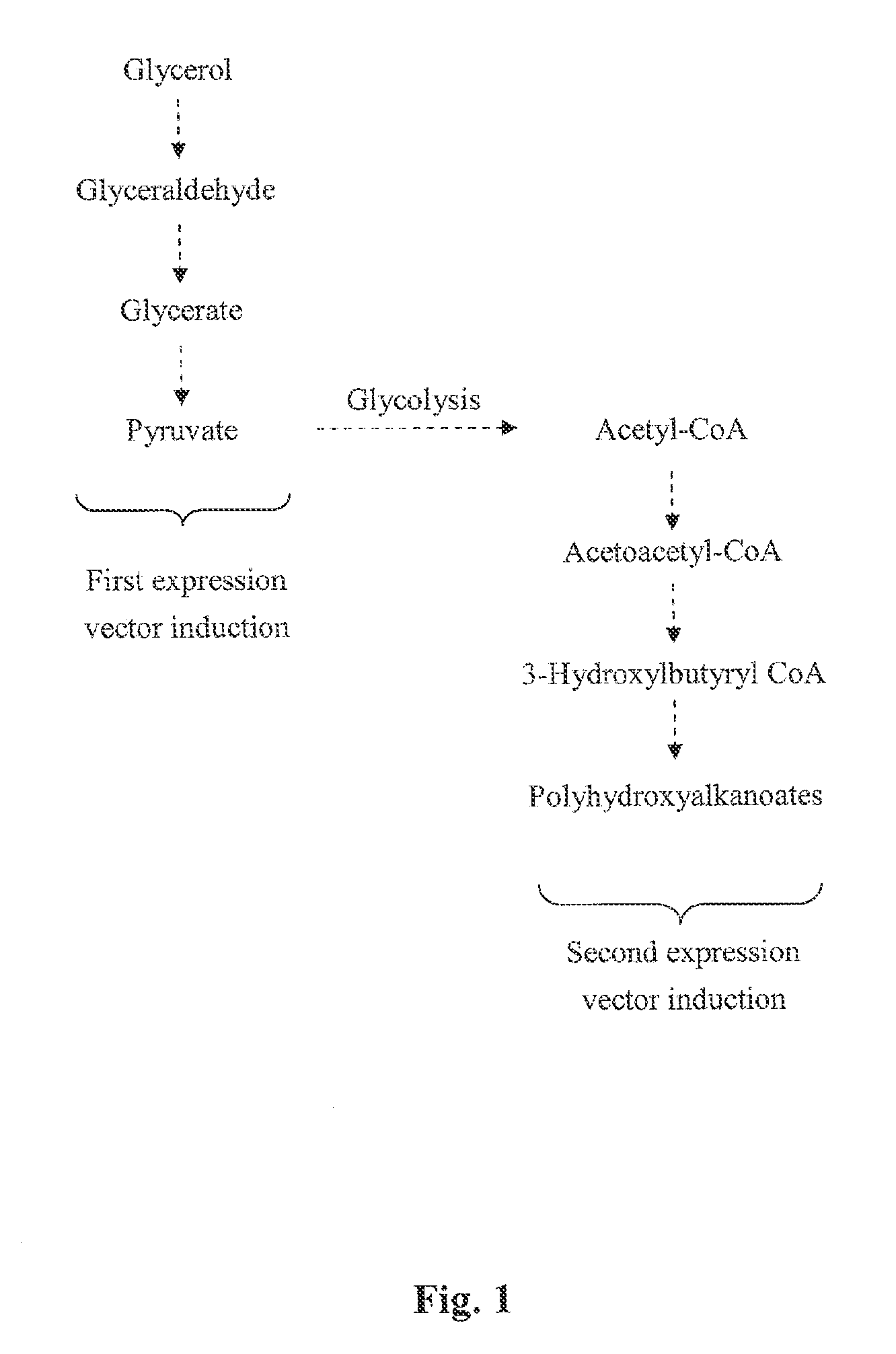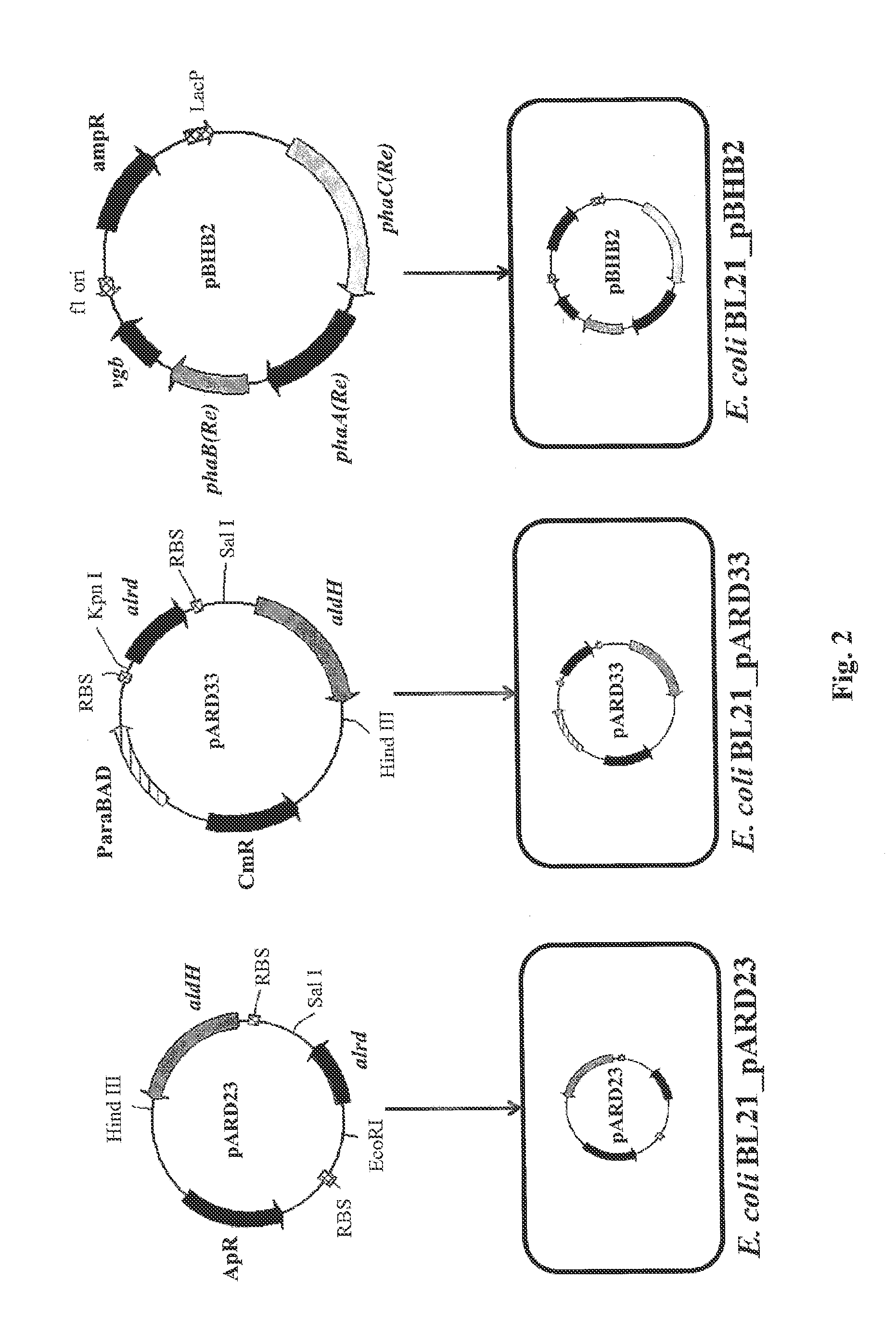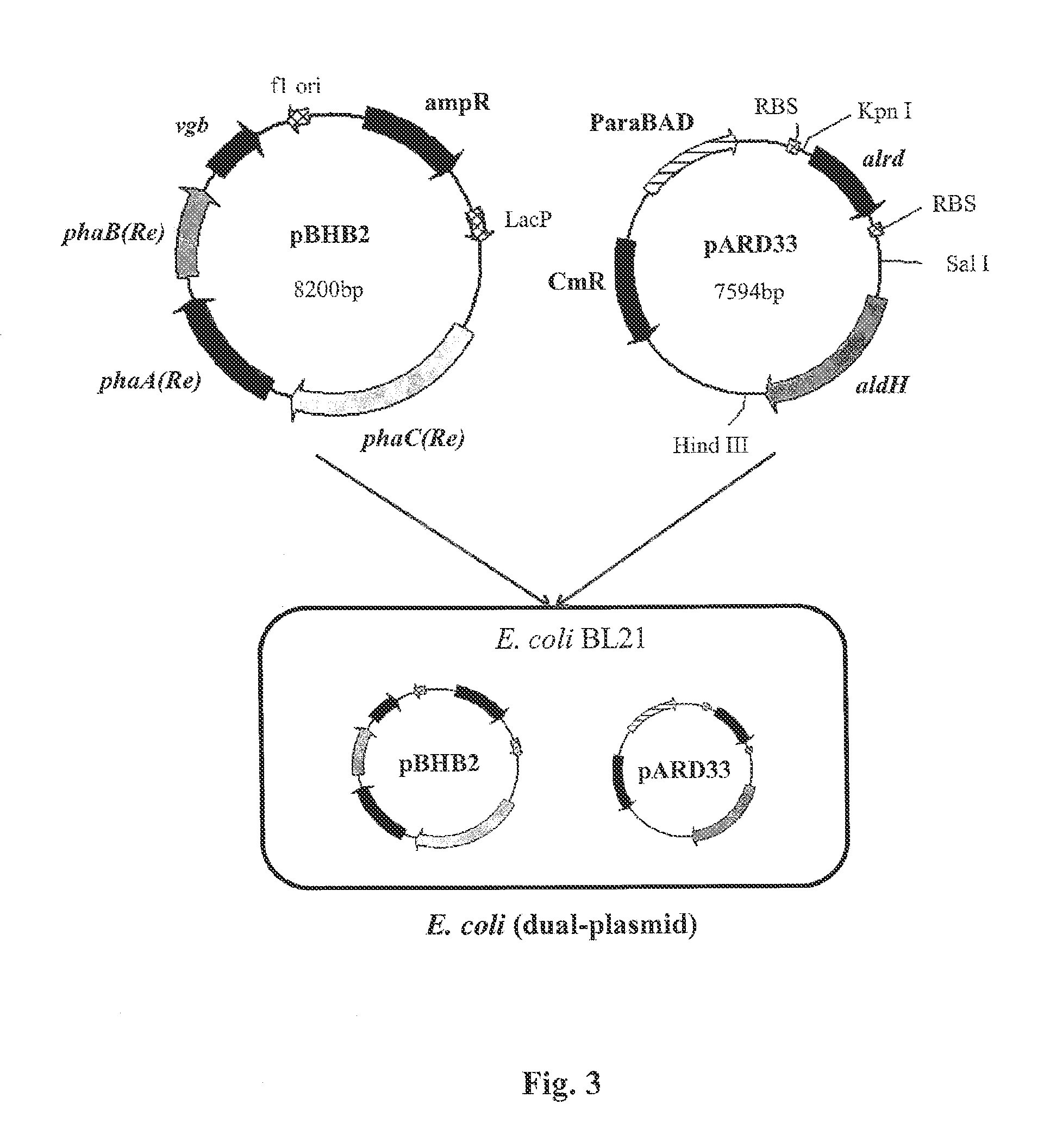Method for producing biodegradable polymer and biomass fuel converted from carbon source by recombinant microorganisms
a technology of biodegradable polymer and biomass fuel, which is applied in the direction of biofuels, enzymology, transferases, etc., can solve the problems of environmental pollution, limited economic benefits, and certainly be serious problems, and achieve the effect of improving the defect of higher cost and facilitating the resolution of environmental pollution
- Summary
- Abstract
- Description
- Claims
- Application Information
AI Technical Summary
Benefits of technology
Problems solved by technology
Method used
Image
Examples
example 1
Establishment of Recombinant E. coli (Dual-Plasmid)
[0023]The E. coli strains and plasmids used by the present invention are listed as Table 1. The genomic DNA of R. eutropha H16 is extracted at first. The gene of aldehyde reductase (alrd) and aldehyde dehygrogenase (aldH) are amplified by polymerase chain reaction (PCR) using abovementioned genomic DNA as temples. The DNA fragments amplified are confirmed by electrophoresis and then cloned to the expression vectors of high-copy pET-23a vector and low-copy pBAD33 vector respectively. In addition, the genes of phaC, phaB and phaA (hereinafter to be referred as phaCAB) encoding for polyhydroxyalkanoate synthase are also isolated from R. eutropha H16 and cloned to pBluescript II KS expression vector. The resulting pARD23, pARD33 and pBHB2 plasmids are then transformed to E. coli BL21, respectively (shown in FIG. 2). Afterwards, abovementioned BL21 clones each with single plasmid are induced for expression, and the level of expressed mRN...
example 2
Fermentation by Shaking Incubation
[0025]Define medium is used for incubation according to the present embodiment, by which the effects of additional carbon and nitrogen source, growing conditions, and the induction concentration are intended to be determined.
(1) Comparison of E. coli (WT) and E. coli (Dual-Plasmid)
[0026]Multiple 500 ml flasks are prepared, in which 3 ml of test clones are inoculated (more than 3%) in medium with total volumes of 100 ml having 30 g / L glycerol and 2 g / L yeast extracts. The prepared medium are then incubated at 37° C. (25-37° C. are available) with shaking at 200 rpm. In order to analyze the growth conditions, medium are monitored by optical density detection at 600 nm with spectrophotometer. Further, crude glycerol utilization rate and PHA accumulation content are analyzed by means of high performance liquid chromatography (HPLC) and gas chromatography (GC).
[0027]The results according to the present embodiment are shown in Table 2. As seen from the ta...
example 3
Fermentation in Bioreactor
[0033]In accordance with Example 2, the culturing condition for high cell density incubation was determined, wherein the crude glycerol served as an only carbon source is added in a define medium, and L-arabinose and IPTG are then added respectively to induce the expression of glycerol utilizing enzymes and PHA synthase by enforcing E. coli (dual-plasmid) to proceed glycerol metabolism so as to produce PHA. In order to evaluate the condition suitable for bulk production of PHA, fermentation in bioreactor is performed according to the present embodiment. The results of fermentation are shown in Table 5. As results shown, although the content of PHA accumulation is fewer than 30% (w / w), however, the glycerol utilizing rate reaches to 94% (w / w). Therefore, the objective of the present invention is achieved.
[0034]
TABLE 5Products of E. coli (dual-plasmid) incubated in bioreactorPHBPHBCG reduceDCWcont.conc.conc. (g L−1)Yx / sYp / sYp / tds / tInd.(g L−1)(w / w)(g L−1)cont....
PUM
| Property | Measurement | Unit |
|---|---|---|
| temperature | aaaaa | aaaaa |
| total volumes | aaaaa | aaaaa |
| total volumes | aaaaa | aaaaa |
Abstract
Description
Claims
Application Information
 Login to View More
Login to View More - R&D
- Intellectual Property
- Life Sciences
- Materials
- Tech Scout
- Unparalleled Data Quality
- Higher Quality Content
- 60% Fewer Hallucinations
Browse by: Latest US Patents, China's latest patents, Technical Efficacy Thesaurus, Application Domain, Technology Topic, Popular Technical Reports.
© 2025 PatSnap. All rights reserved.Legal|Privacy policy|Modern Slavery Act Transparency Statement|Sitemap|About US| Contact US: help@patsnap.com



